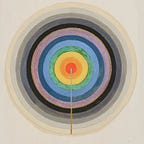Nocturnal Forest
Excerpt of research investigating implications of proposing a carbon offset model to fund El Limón agave reforestation project in Tonahuixtla, Mexico, considering alternative models moving forward.
“In times of chaos we will have to rethink systems, not as the end goal but also as a pathway towards new societies. ” Pablo Solón, Buen Vivra in Times of Chaos
Nature is increasingly being commodified in the fight against climate change, with agave as a particularly productive asset of capital within the carbon offset and eco-capitalist landscape.
Thriving in harsh environments, agave are low-maintenance, drought-resistant, carbon capturing machines — capable of producing 43 tons of dry weight biomass per hectare or more per year on a continuous basis (Agave Power: Greening the Desert, Cummins). Within the carbon offset space, companies pay on average $340 / hectare of land that remove 20 tons of carbon, making agave an especially valuable asset from the supplier side.
“When we work to renegotiate the relationship between human, forest, design and economy — are we witnessing the invention of something new here or are we trapped in the force of our own delusion?” (Dan Handel, 2021)
Contrary to most plants, agave open at night and close during the day — performing photosynthesis at night. Night time openings mean less carbon dioxide is absorbed and photosynthesis is less efficient, but the plant retains more water than it would if it opened its stomata under the hot sun — an evolutionary tactic that supports them to survive in extreme hot and dry climates (Nature Plants, Abrahams et al).
Facing extractive financial models, Agave’s ‘anomaly’ of nocturnal photosynthesis emerges as a subversive portal of possibility. Stepping into its nocturnal forest, we relinquish our grasp of control to embody new ways of knowing ~ of sensing, of alternatives to the status quo.
“… The lamps keep swaying, fully unaware: Is our light lying? Is night the only reality that has endured through thousands of years?” — Night, Rainer Maria Rilke
A deep — soothing hum — sonar sound — warm air cooling — deep rumbling — I wonder what it sounds like? Your world? What does it feel like? As the long-nosed bats rustle in your bitter flowers — covered in your pollen — as your roots reach and mingle with those of the cactuses that stretch up to the glowing skies — tell me about the nocturnal symphony of El Limón.
“There is a lot we do not know — how exactly the web of life is interconnected and what might cause a tipping point. The hubris with which we have designed the economic system and carry on with it at this scale and pace is extraordinary — ” — Karena Gore
In the space of darkness, in the feminine, sensual, enchanting state of vulnerability, in the agave’s night, we are a guest — immersed in a resilient, complex aliveness & ancient reality that has existed long before us — and will continue to exist long after us. In the nocturnal forest, we don’t find the answer. Rather, we embrace the scale of unknown while hearing whispers of what could be —
